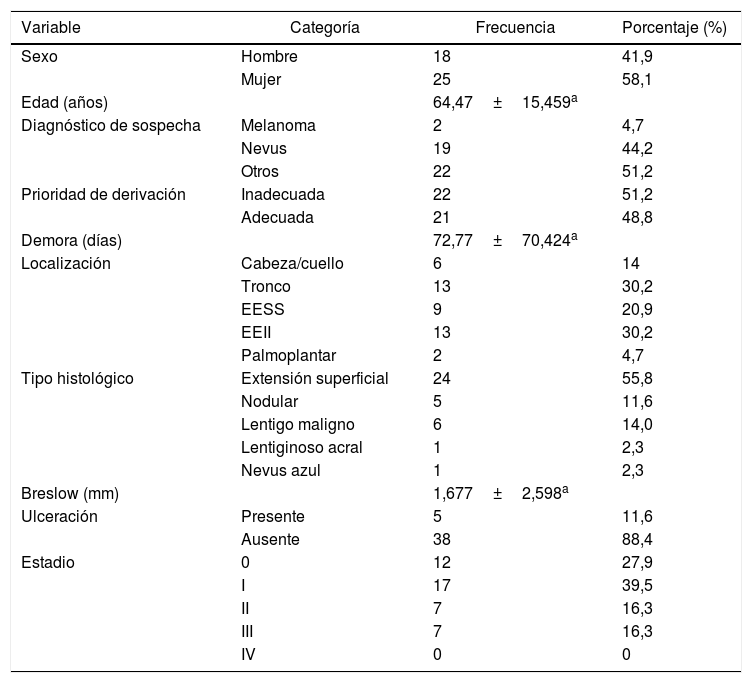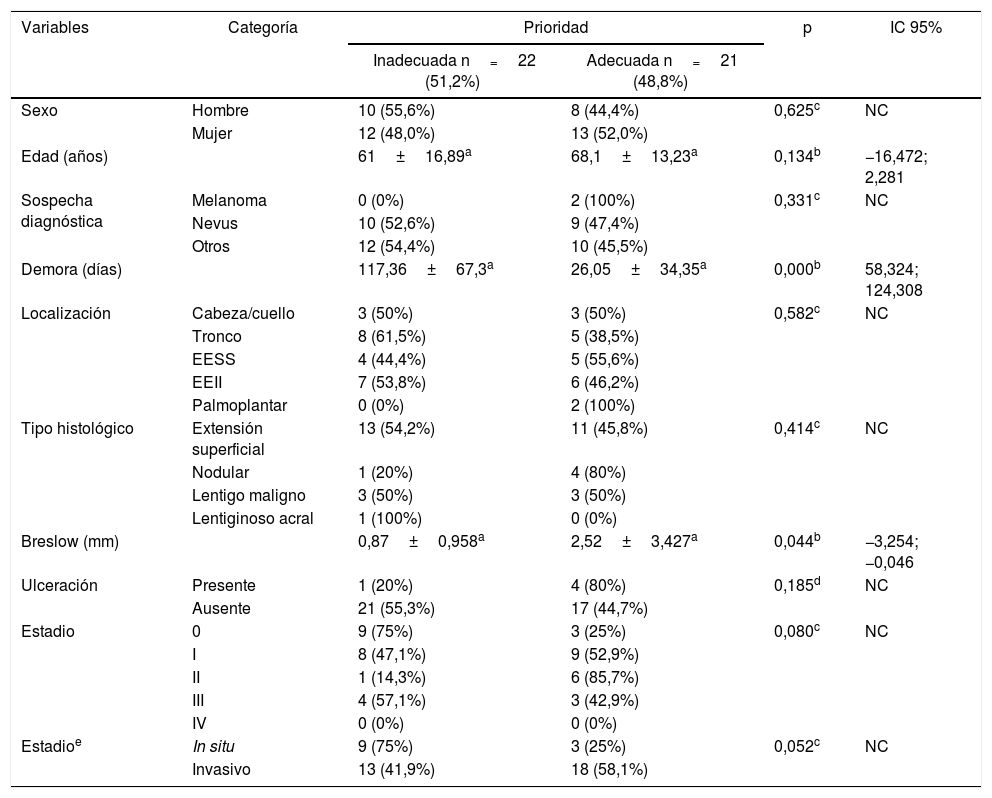En nuestro sistema de salud, los pacientes llegan a dermatología principalmente remitidos por su médico de atención primaria, que es quien establece la prioridad de la derivación. El objetivo del presente estudio ha sido evaluar la proporción de melanomas cutáneos que son derivados de forma adecuada (vía preferente) frente a los derivados de forma inadecuada (vía ordinaria), y las diferencias existentes entre ellos.
MétodosSe realizó un estudio observacional, transversal, de carácter retrospectivo y descriptivo. Se recogieron datos de los casos de melanoma cutáneo derivados desde atención primaria en el Departamento de Salud de Castellón entre noviembre de 2016 y noviembre de 2018. El análisis estadístico se realizó mediante SPSS®.
ResultadosEn el periodo de estudio fueron derivados desde atención primaria 43 melanomas cutáneos. El 51,2% se derivó de forma ordinaria, frente al 48,8% que se derivó de forma preferente. El espesor de Breslow medio de los casos remitidos por vía ordinaria (0,87mm) fue significativamente inferior al de los remitidos por vía prioritaria (2,52mm) (p=0,013).
ConclusionesExiste un uso inadecuado de las vías de derivación, ya que más de la mitad de los pacientes con melanoma son remitidos desde atención primaria por vía ordinaria. Los melanomas con un espesor de Breslow menor se derivan con mayor frecuencia por esta vía, lo que sugiere que los médicos de atención primaria tienen una especial dificultad para identificar casos de melanoma en sus fases más iniciales.
In the Spanish health system, most patients are referred to the Dermatology Unit by their Primary Care physician, who establishes the referral priority. The purpose of the present study was to evaluate the proportion of cutaneous melanomas referred through priority routes compared to those referred through ordinary routes, and the differences between them.
MethodsThis is an observational, cross-sectional, retrospective, and descriptive study. Data were collected from cutaneous melanoma patients referred by Primary Care physicians in the Health Department of Castellón between November 2016 and November 2018. The statistical analysis was carried out using SPSS®.
ResultsA total of 43 cutaneous melanomas were referred from Primary Care in the study period. Of these, 51.2% were referred through ordinary routes, compared to 48.8% that were referred through priority routes. The average Breslow thickness of the cases referred by ordinary route (0.87mm) was significantly lower than that of those referred by priority route (2.52mm) (P=.013).
ConclusionsReferral routes are being used improperly since more than half of patients with cutaneous melanoma are referred from Primary Care through the ordinary route. Melanomas with a lower Breslow thickness are more frequently referred in this way, which suggests that Primary Care physicians have a particular difficulty in identifying cases of melanoma in its earliest stages.







